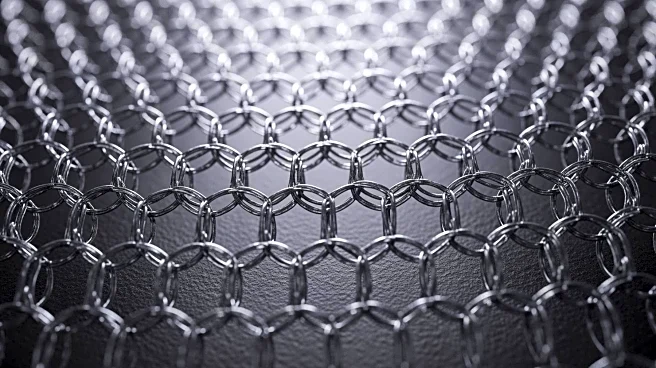What's Happening?
Researchers have created a new composite material that surpasses Kevlar in strength and toughness while being thinner. This innovation involves aligning aramid chains and carbon nanotubes in a parallel
configuration through a multi-step stretching process. The alignment locks the components together, enhancing the material's ability to absorb energy without failing. The new material has demonstrated superior anti-ballistic performance in tests, making it a promising candidate for future protective gear.
Why It's Important?
The development of this new material could revolutionize the protective gear industry by providing lighter, thinner, and more effective options for body armor and other protective applications. This advancement addresses the common trade-off in materials science between strength and brittleness, offering a solution that enhances both properties. The potential for widespread adoption in military and law enforcement sectors could lead to significant improvements in safety and mobility for personnel.
What's Next?
Further research and development are likely to focus on scaling up production and integrating this material into commercial products. The material's performance in real-world applications will be closely monitored, and its adoption could prompt a reevaluation of current standards in protective gear manufacturing. Stakeholders in the defense and security industries may express interest in this technology, potentially leading to partnerships and collaborations for its deployment.
Beyond the Headlines
The ethical implications of this development include considerations of how enhanced protective gear could impact law enforcement and military operations. The material's potential to reduce injuries and fatalities could shift public policy and funding priorities towards more advanced protective technologies. Additionally, the environmental impact of producing and disposing of such materials will need to be assessed to ensure sustainable practices.











